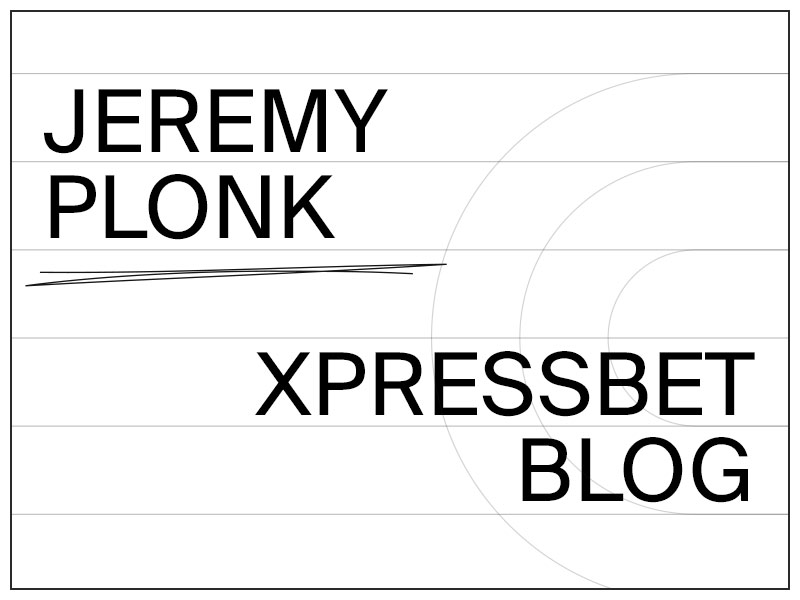by Jeremy Plonk
July 10, 2017

No doubt a romantic view of horse racing exists, and without it, the Sport of Kings would not be the same. But it’s also true that a very unromantic faction greases the entire engine that drives the industry. The nuts-and-bolts of handicapping and betting the races creates all the revenue. It’s the balance of those two parties that provides horse racing such a tricky divide between sport and business.
You won’t find agreement on which side is most important even within the same boardroom; hence, we have marketing and operations conflicts on a daily basis. Instead of bowing up and taking a side, the industry most often tries to toe the line between the romantic and unromantic, the sport and the business. What you end up with – as is the case in most every compromise known to man – is a position that’s half-this, half-that, and neither stance fully comes to fruition.
They say in football that if you have two quarterbacks that you really don’t have a quarterback at all. Meaning, if one can’t separate from the other, then neither really is all that good of an option. When you think about horse racing, that’s also fitting. If you can’t figure out if you’re sport or business, chances are you’re not going to showcase either properly.
Talking about “horse racing” in general terms always is a convoluted concept. It’s like saying “football” and not distinguishing between the NFL and Pop Warner teams. “Baseball” is the New York Yankees, as well as the Toledo Mud Hens, but no one even flippantly tries to convince you that they are to be treated and operated the same way. So, why then, would Churchill Downs, Saratoga, Santa Anita and Del Mar, operate under almost identical conditions, rules and strategies as we see at Mountaineer, Delaware, Fairmount and Les Bois Park?
Think about it: these tracks are run under almost blank playbooks – just with different logos on the title page. No one does anything particularly different. They run 8-12 races several days per week under similar takeout prices and wagering formats, occasionally offering a giveaway or concert for on-track fans and stockpile their stakes races and best horses a few times per meet.
Who really is doing anything different? Whether you’re talking the romantic side of racing and festivals of starpower, it’s no different from Belmont (Stars And Stripes Day, Belmont Stakes super stakes card) to Mountaineer (stakes galore for West Virginia Derby); and essentially the price to play the races is the same at Tampa Bay Downs on a weekday as it is on Florida Derby Day at Gulfstream Park.
The real creativity in horse racing seems to be coming from the ADW marketplace, where online wagering sites are aggressively promoting different ways to lure customers. It’s fair to say that the number of new recruits in this field has leveled in the past decade, and that they’re now in a battle amongst each other to bring the existing online players into their fold. But when you talk about rebates, reduced takeout promotions, money back specials, sign-up bonuses, parimutuel-based special contests and more, you’re almost exclusively seeing them from the ADW segment. There have been a few on-track betting attractions like Oaklawn’s reduced show takeout, but they are exceptions to the status quo
Part of that is overhead cost to be sure. It’s infinitely cheaper to run an online operation than the bricks-and-mortar of a racetrack where costs like healthcare, insurance, escalators, elevators, manure removal and dozens of other expenses add up quickly to far more than you think. So it bears to reason that an ADW has more of its operating budget available to promotion and marketing than a racetrack, which has far more mounting costs in operations.
But the creative spirit to do things differently can’t just exist in the ADW market if racetracks are to realize their maximum return in the increasingly competitive marketplaces of both gambling and entertainment. The track that fights to find something effective and new that sticks will be greatly rewarded. The ADW marketplace is offering some positive momentum in terms of fresh ideas. Now it’s the responsibility of the brick-and-mortar racetracks to figure out how to implement them.
The first step would be to realize that the romance is gone. Look in the mirror and realize you are a gaming institution and get on the side of the business model and not the sports model. There’s nothing shameful in admitting that. In fact, there will be great rewards for the first racetrack willing to fully embrace this fact and do something radically different.